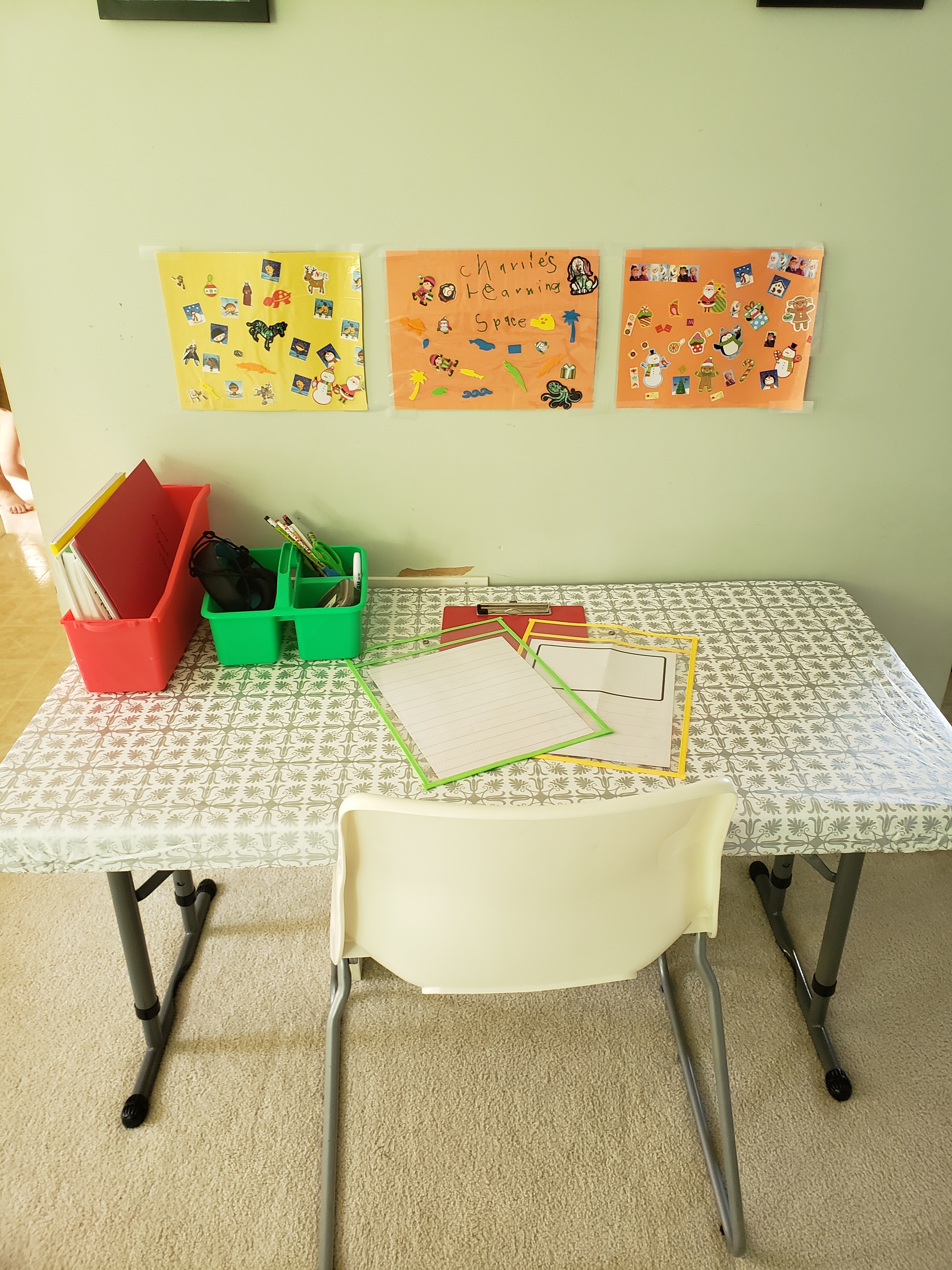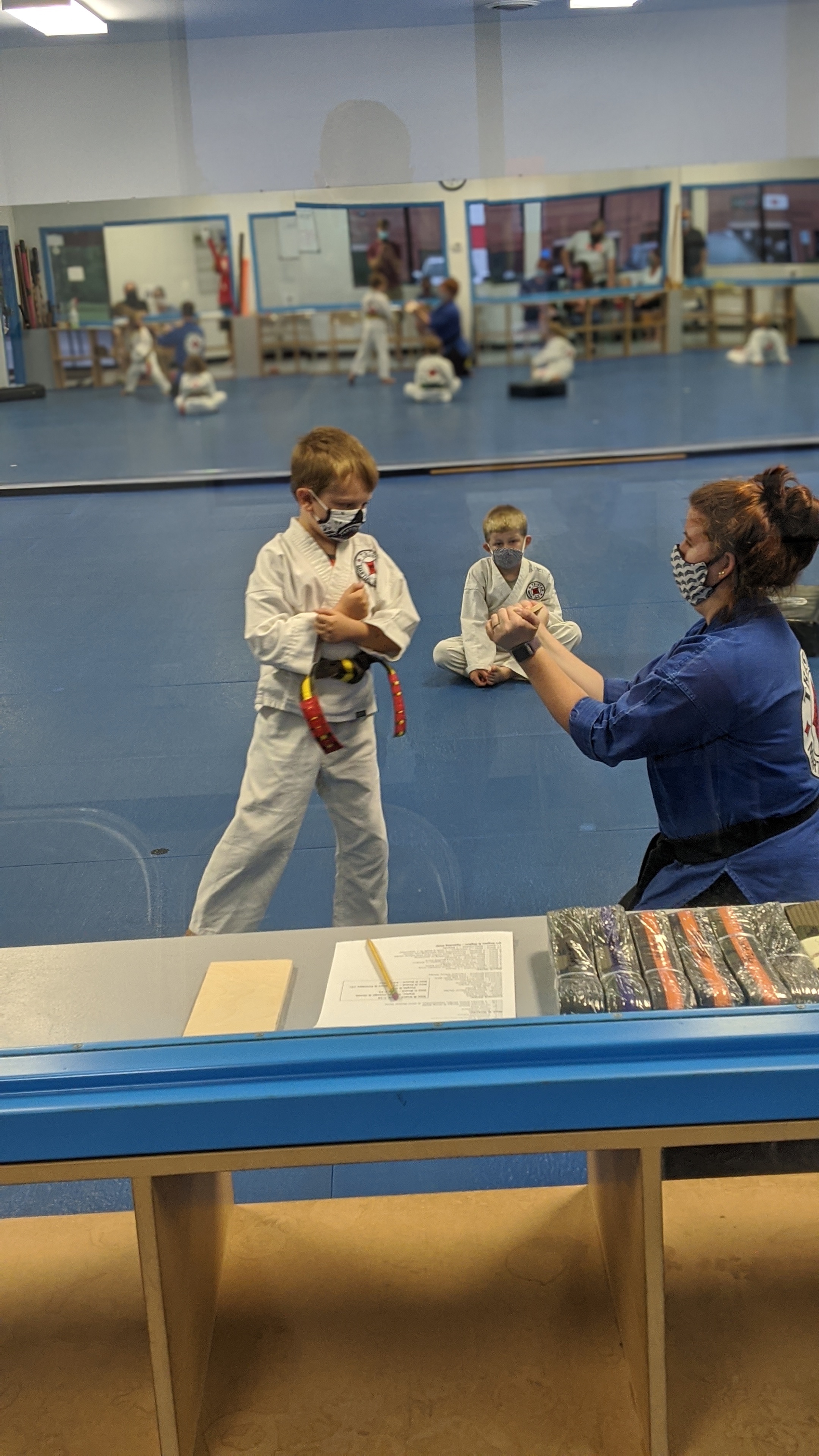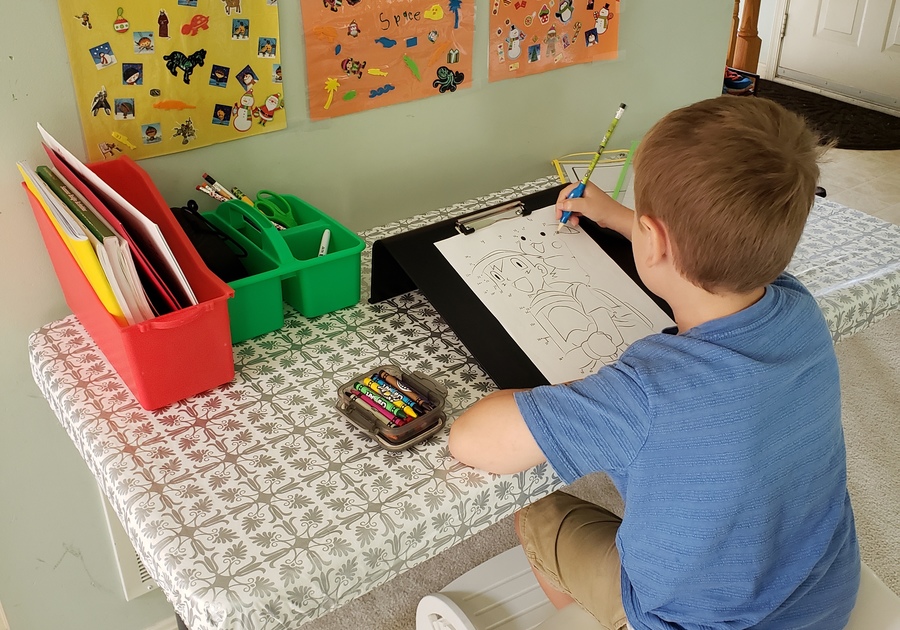The dread of what is to come this Fall with the “back-to-school” situation is laying heavy on me these days. I know I am not alone. The concept of virtual learning seems virtually impossible at times. It’s not going to be easy, but I believe we can do it. To help, I have looked to the experts to incorporate ways to make this transition as smooth as possible and I’ve boiled down their recommendations to 5 key ways to survive, and maybe even thrive, in the distance learning environment.
1) Find a schedule that works for your family - Children need to feel secure in order to be in the right mindset to learn and retain new information. Routines and schedules can help maintain a sense of normalcy and structure during these uncertain times because children can begin to generally predict what happens next in the daily flow of events. It can also help children understand expectations which can (hopefully) reduce associated behavioral problems. The schedule should be well-balanced with time for both loud and quiet activities, indoor and outdoor time, and social and independent play. And please remember, the schedule doesn’t need to be a binding agreement; there should also be flexible time built into the schedule. In my family, we don’t use our schedule on the weekends at all. It gives us all a little break. However, keeping the structure and routine that our children typically have in the school setting can make everyone’s lives easier. And hey, it could even cut down on how many times a day we hear, “What are we going to do next??” or “I’m bored!” Is there any better reason to try this??
2) Create a dedicated learning space for your child - Once you’ve decided what is going to happen in the course of the day, next you need to decide where your child will be learning. Just like with good sleep hygiene, there is also good learning hygiene. Your child deserves a place they will be excited and ready to learn. I’m not recommending that you set-up a home office for your Kindergartner. In fact, I just set up two folding tables for each of my older boys with plastic bins to hold their school supplies. It is good enough. The point is that it is their very own area. I had them decorate personalized posters to hang above their “desks” and I will hang their school schedules once they are finalized. My 4th grader said, “I didn’t know it would look this cool!” (Major Mom points there). If you don’t have the space in your home, you can even have your child decorate a cardboard partition that you place in front of them on the dining room table when it is time for school work. While a quiet and distraction-free environment is nearly impossible (especially in my home), trying to limit distractions should be the gold standard. This is where headphones can be extremely important. Again, we aren’t recreating the Oval Office here; we are just trying to get our children in the mindset to focus and learn.
 |
3) Find your own positive reinforcement system - So, we have the schedule and the space, but how do we encourage our children to maintain attention and do their best work? We have to trust that they will listen to us, their parents, and always put forth a 100% effort, right? Yeah. That makes me nervous too. At our elementary school, the students were rewarded for positive behavior with “Panda Bucks” as the school’s Positive Behavioral Interventions and Supports (PBIS) system. They were able to trade these Panda Bucks in for small items like pencil toppers from the school store or they could save up for privileges, such as sitting at a VIP table at lunch. A couple of years ago, we decided to model this system in our home with “Fisher Bucks.” (I know, super creative of me)! The boys are given bucks throughout the week for exemplary behavior, completing chores, and the like. We plan to carry this system through the distance learning phase by loading our kids up with bucks they can trade in for real money, toys, and privileges anytime I see them putting forth a great effort in their learning. As adults, we reward ourselves all of the time for our accomplishments - why not do the same for our kids? And, if this doesn’t work, there is always duct tape, right? (Kidding)!
4) Don’t leave out the specials - I know, I know. It is so tempting. It would be so easy to just skip this portion of the day. But, I’m urging you not to. Hear me out. Hear the experts out. School specials, including art, music, media, PE, and more, are as essential to our children’s education as math or reading. Studying the arts encourages children to develop communication and life skills, increases self expression, as well as creativity. We want our children to grow up to think outside of the box and the arts promotes this skill. The skills learned in a PE class can improve gross motor skills, increase confidence, and concentration. I am pretty sure if I hear “Hot Cross Buns” on the recorder one more time that my brain will melt, but seeing the proud face of my son as he hits every note is worth it.
5) Keep your kids socially and physically engaged - I saved the best for last with this one. This is extremely important for our kids’ mental and physical health. Our children are not meant to grow up in isolation. They need to be engaged in their peer community. While the school typically provides this for kids, the virtual learning platform will definitely fall short of meeting this need for them. Most of their days will be spent sitting at home, sedentary, behind a screen. In a typical school environment, there is time for social skill building at lunch and on the recess fields. There is time for activity and motion in the PE classes. We need to make sure that we find ways to build this time into our children’s schedules. One way to do this is to sign your child up for an after school activity. Some sports are in session, but many are not. And honestly, who knows for how long? We have had the privilege of having our son train with TriStar Martial Arts in Westminster for the past year. TriStar has provided a safe and character-building sport for our child when he needed it the most. The past year has been tough with the pandemic, but there was never a lapse in training. During his training, traits such as respect and discipline have been heavily enforced. These are proficiencies that the students will carry from the dojo to their virtual classrooms. They have to learn to quickly adapt and focus in new environments - an important skill in these times. TriStar was adaptable, providing continuous training for the students by moving from in-person training, to virtual, to small group outdoor classes, and now back to in-person training. With many sports, it is nearly impossible to socially distance the players. The martial arts provides a social, yet socially distant option. TriStar has policies and safeguards in place to ensure all of the students and spectators are following appropriate health protocols. And, honestly, what other sport is there where a mask seems completely appropriate? There is no season of martial arts as it is with other sports; it is continuous. And that is the kind of structure and predictability that our kids need right now. Whatever you decide, make it a goal to keep your kids active and social. We can catch kids up on their arithmetic, but it is much harder to rebuild their mental and physical health.
 |
With all of these tips in mind, please remember that perfection is never the goal. We can get by with “good enough.” We are trying to raise happy and secure children first and foremost. And we need to mind our own mental health in the process. Good luck to everyone!
*My son received free classes in exchange for this review. As always, opinions are 100% my own.


